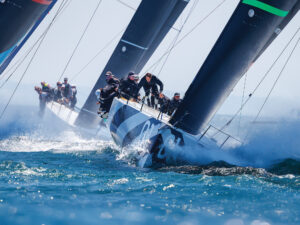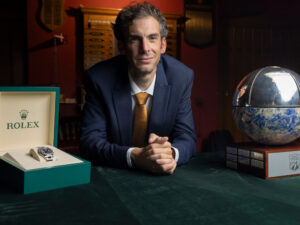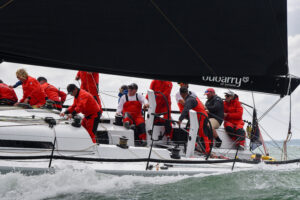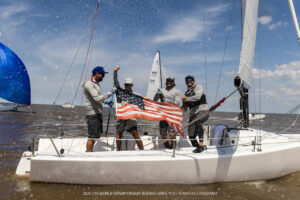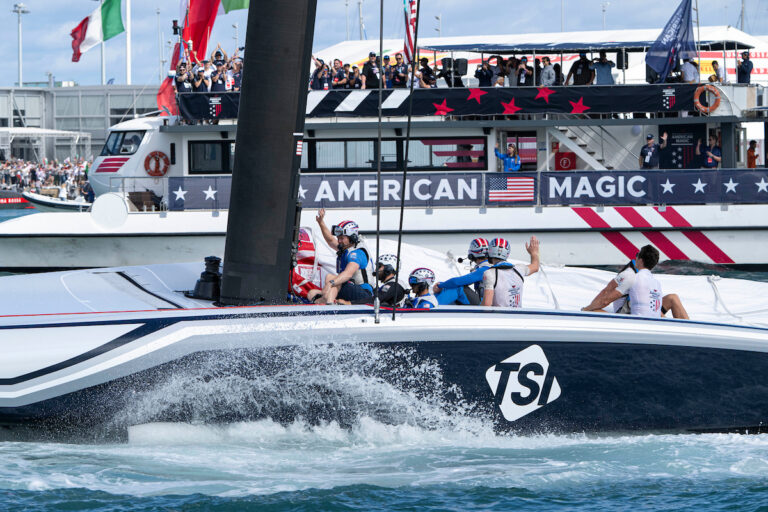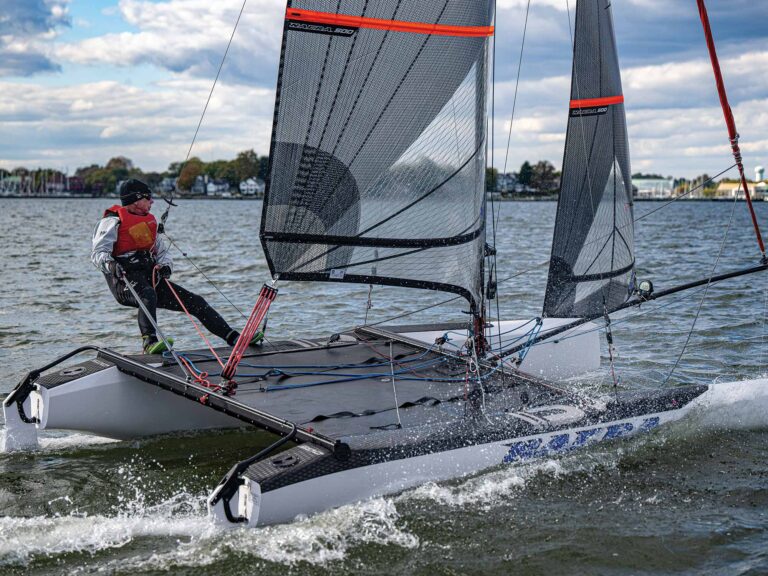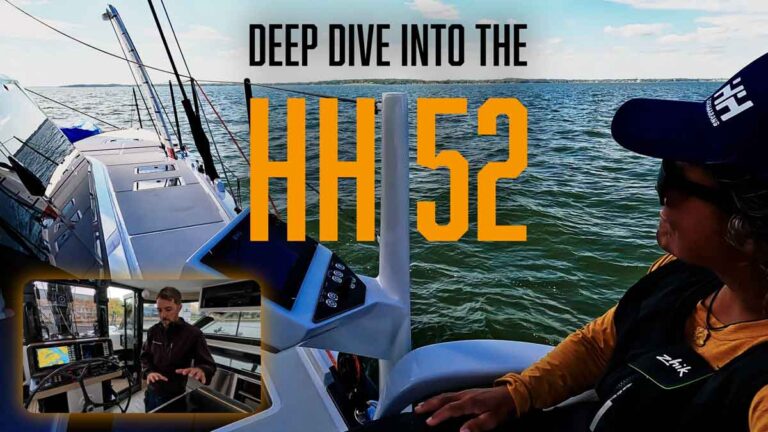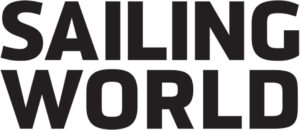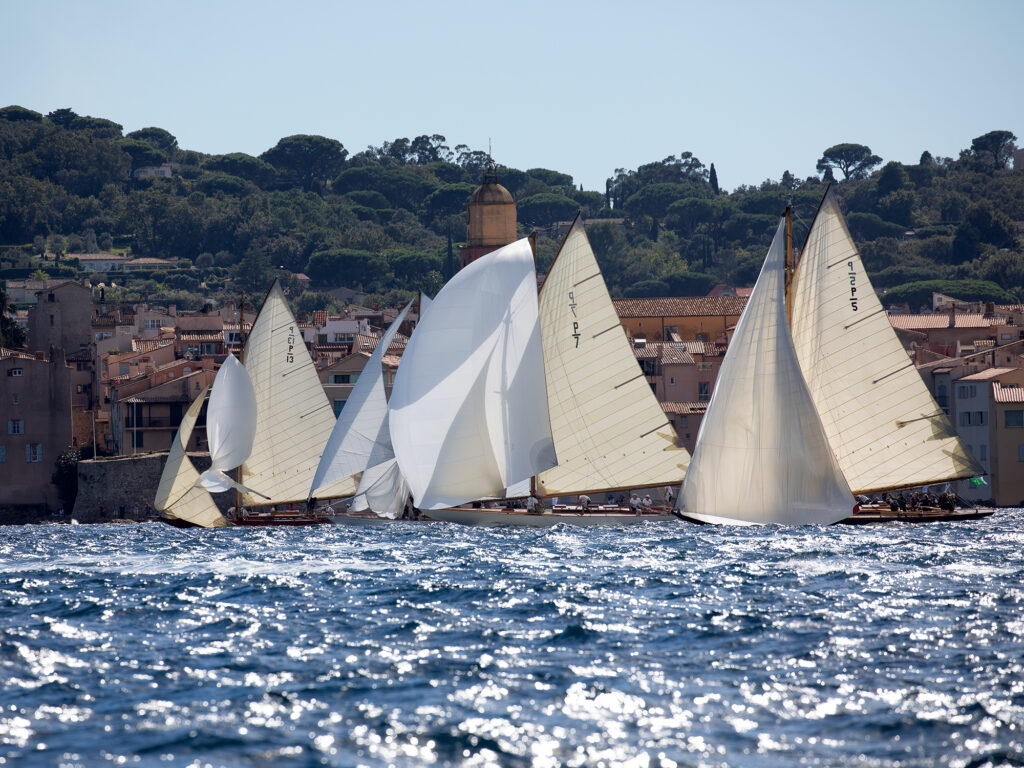
In recent years, there has been renewed interest in the Universal Rule, introduced by Nathaniel Herreshoff in the late 1890s. The rule aligned with letters of the alphabet, with I being the largest class, followed by the infamous J Class down to the S Class, a small open daysailer still actively raced in the US. European preservationists have long maintained many of these yachts and their history. The P Class is one of the Universal Rule era that has attracted the strong interest recently from Europe. Over the past 10 years, four of these classics have been found, restored and shipped off to Europe. The class was originally designed to ply New York’s Long Island Sound, Newport and water north of Boston, in the area of Marblehead. The yachts came from the boards of some of the most famous designers of the period: Starling Burgess, Nathaniel Herreshoff and William Gardner.
The lead proponents for this class revival are Bruno Troublé, America’s Cup skipper, and John Anderson, a transplanted Brit who has restored four P Class yachts for Troublé and his group of friends. Troublé once admired Falcon II, a Q Class yacht during a New York YC cruise, which Anderson and his father-in-law had rebuilt. Troublé was so enamored with the boat that he enlisted one of his friends, Pascal Oddo, into buying it.
Bringing the boat to Europe and racing in the Med, Oddo recruited his brother Phillipe for part of his crew. Intrigued by the yacht, Phillipe insisted he have his own, but he wanted something a little bigger. Oddo and Troublé then spoke to Anderson, who had worked on Falcon II, and were soon venturing to Wisconsin to inspect a couple of boats. There, they found the P Class Olympian, designed by William Gardner.
They had Anderson fly out to look at the boat and estimate the restoration work, as well as determining how they would reconfigure the sail plan back to a gaff rig. Olympian had spent most of its time in the Midwest. The owner had maintained the boat to a degree and had even installed a carbon Marconi rig. Oddo purchased the boat and had it shipped to Anderson’s farm in Warren, Maine, where he built a new gaff rig for it. They anticipated the deck needing to be replaced, but it was discovered that all of the deck braces were rotted.
The project expanded to replacing the entire deck and moving the engine to the centerline of the boat. The deckhouse was reduced because the existing one was esthetically too large. Several days before the boat was to be shipped to Europe, it was put in the water, the rig was organized, and then the boat was trucked to Newport, where Troublé and its owner took it for its final sail in US waters. Roughly two years of work had been required to refit the classic yacht, and Olympian arrived in Europe in 2014.
The Oddo brothers were now racing—although not against each other—one with a P Class and the other with a Q. Naturally, another of their friends took an interest in the P. This time, a search uncovered a boat that had been renamed Chips, which had spent most of its recent days in Newport. The boat was originally called Onda and spent its early years in Marblehead, where it was designed and built by W. Starling Burgess, the designer of three America’s Cup defenders in the 1930s.
The rumored name for Chips came from a story that at some point it was won in a poker game. Adrian Pearsall, an architect and furniture designer, bought the boat in 1986, restored it in Pennsylvania, and took it to Newport, where the family sailed and raced it. In 1993, it was sold to Genevieve Cerf, but with the right of first refusal for Pearsall and his family if it was ever to be sold. In 2007, a buyer approached Cerf, and she sold Chips back to Pearsall’s son Jed and his partner Bill Doyle. They sailed and raced between Newport and Marblehead until Anderson and Troublé came to Newport to take a look.
Anderson’s assessment was that it needed everything. Every frame in the boat was broken and its backbone was rotted, but Frenchman Bernard Liautaud wanted the boat. So Chips was shipped up to Anderson’s farm, where he lifted the hull off its keel and replaced all of the frames.
“I think we kept three yellow pine planks on either side, and we had to replace the rest,” Anderson says. “We used Sipo rather than the yellow pine and riveted the whole boat rather than use screws.”
A new engine was installed, the coach house trimmed, and its brass portlights were replaced with smaller beveled-glass windows. “We kept the original mast but made it taller,” Anderson says. “Bruno wanted a larger sail plan, so we scarfed in about 6 feet to the foot of the mast.”
Liautaud then had it shipped to France in 2018 to join Olympian. With two P Class restorations now racing in France, there was an even greater interest in the class. Troublé was on the lookout for another. Anderson knew of Corinthian, in Connecticut, but doubted that the owner would sell it. Corinthian was designed and built in 1911 by Herreshoff, his project No. 708. The boat changed hands several times before finding its way to Michigan, where a number of the P Class boats seemed to have spent a lot of time. It then ended up in Louisiana and was not well-looked-after.
Glenn Kim, of Connecticut, had Corinthian trucked to Connecticut, where it sat on blocks for a number of years. He was not initially interested in selling, but like all the others, Corinthian was eventually sent to Anderson’s farm for a total restoration, lifted off its keel, and stripped the bones to save its interior cedar planking. A new coach house and engine were installed. The cedar interior was stripped of paint and varnished to its original state before finally being trucked to Newport and promptly shipped to Europe in 2021 for owner Sebastien Bazin.
In 2021, with three boats now racing, the class was generating even greater interest. Stephan Lobmeyr, an Austrian living in Paris and an International 420 sailor as a youth, was next to take the leap, and his search led to the Herreshoff-designed Joyant.
Joyant was quite a bit larger than other P Class yachts racing at the time of its build, being 58 feet overall and about 35 feet, 6 inches at the waterline. This was about 3 feet longer on the waterline than its competitors, and it had about 200 square feet of additional sail area. Following its launch in 1911, Joyant’s racing results were so dominant that other designers and members of the class said that the rating rule needed to be changed to make the displacement and sail area proportional to the length.
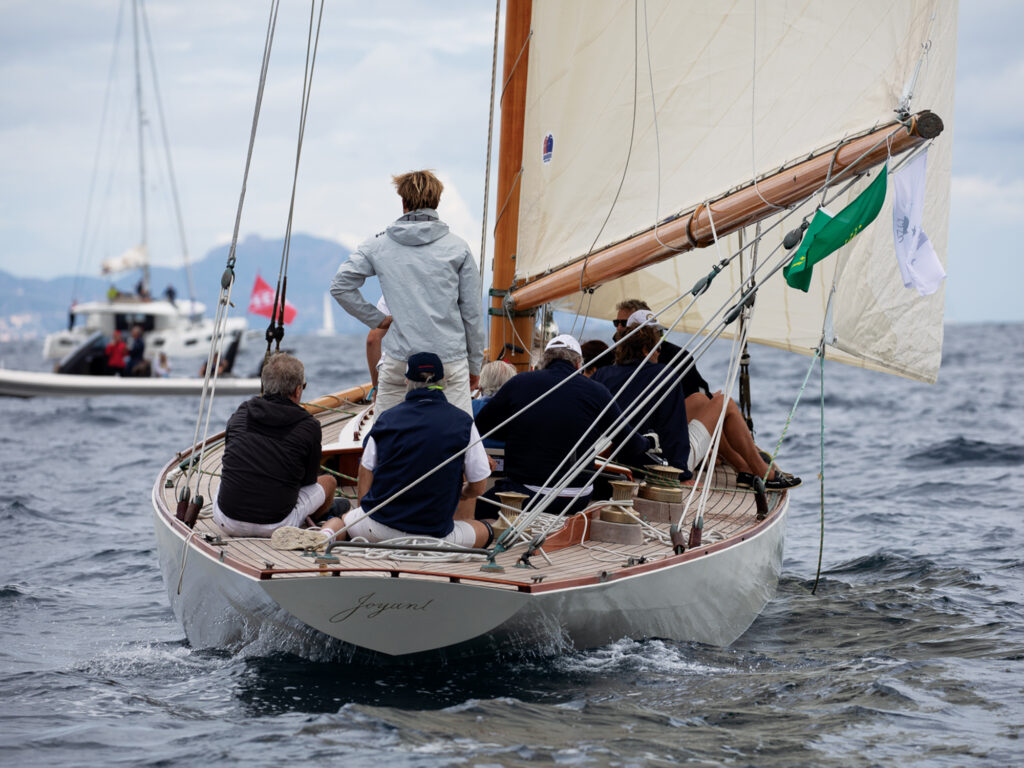
By the early 1920s, Joyant was on the Great Lakes and was converted from a gaff to a Marconi rig. After World War II, the boat was back on the East Coast, first in Miami, then New York, and ultimately in Portland, Maine, where in 1975, while being lifted by a crane, it was dropped on its side and declared a loss. Two furniture-makers hauled its remains to Cape Cod, hoping to salvage wood from the hull and deck.
They found that process harder than they thought, so the yacht sat in a backyard for 25 years, until restoration master Jeff Rutherford, of California, visited its remains on behalf of client Bob McNeil. When Rutherford saw the state of the boat—it was missing its keel and rudder, plus there was significant deterioration of the hull and deck—he told McNeil that it was not worth the effort, but McNeil proceeded anyway.
Joyant was dug out from its resting place, placed in a custom cradle, and shipped to California. McNeil returned the yacht to its original configuration—without an engine, and back to a gaff rig. Ninety-five percent of the boat was built with new wood, and to minimize maintenance, it was encased in fiberglass. McNeil sailed with his family and in races between Newport and his Maine home in Islesboro.
After McNeil’s passing, Joyant was available, and it was Troublé, with current owner Stephan Lobmeyr, who came knocking. A fourth member of the class would be attractive and might enable the four to have their own starts. Joyant had risen from the ashes roughly 20 years before, but there was still work to be done, with the most painstaking part being the removal of the fiberglass shell. There was also modification to the rigging to equate it with the other P Class boats, and an engine installed.
With the arrival of Joyant, there are now four P Class boats racing in the Med. There are few others still in existence: one in Italy awaiting restoration; another in New York, which has been converted to a ketch; and one in Nova Scotia, which appears to have been well-preserved. Perhaps they too might join the European fleet someday, but in the meantime, P Class racing continues, drawing the admiration worthy of these fascinating classics and the stories that are preserved deep in their timbers, or whatever remains of them.

